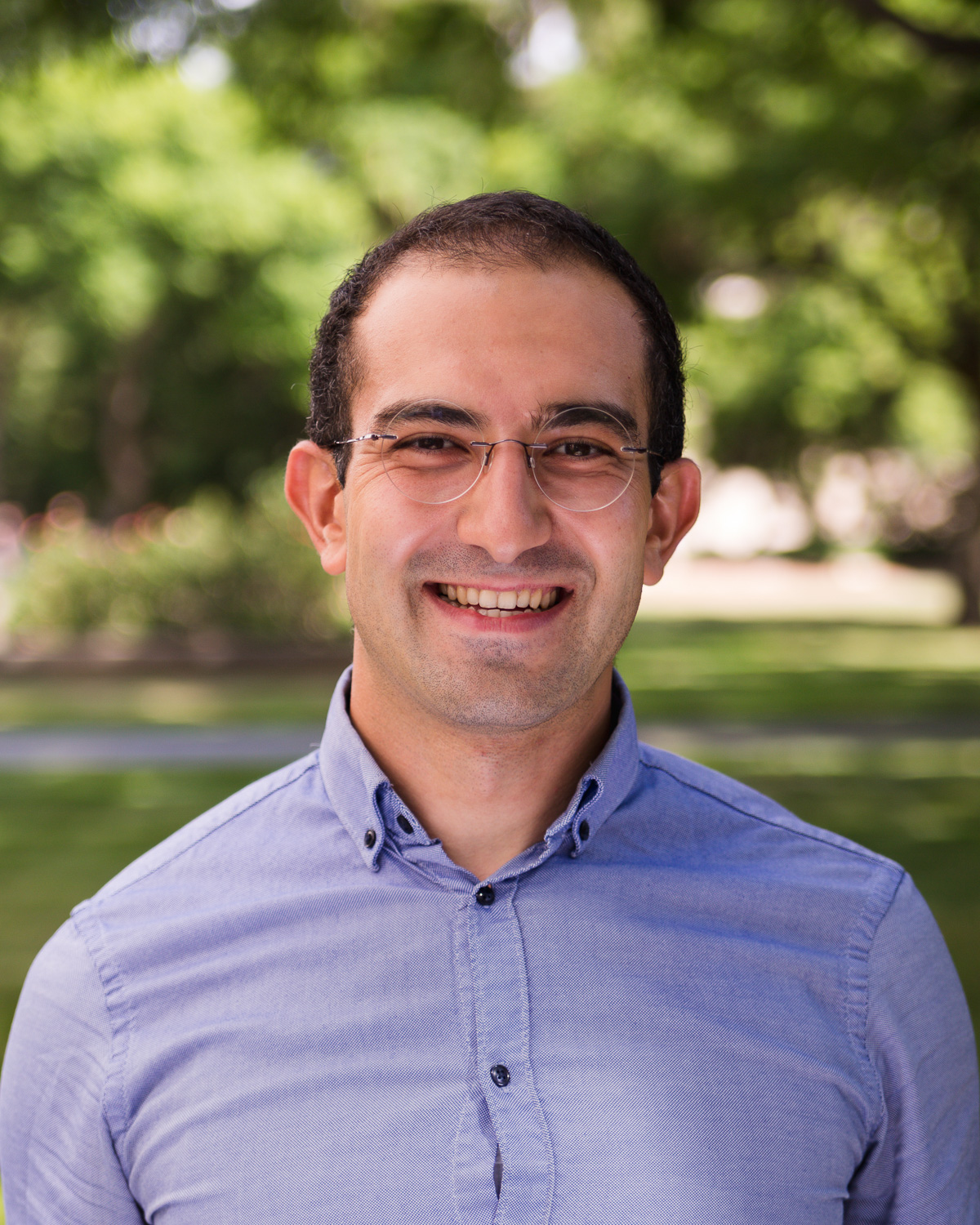
Hrant Gharibyan
“Grappling with large, fundamental questions and working to solve puzzles by bringing together our understanding of the theories of quantum and gravity propels me in my work. I enjoy the tension and the way that conflict pins down these puzzles of the universe.”
Co-Founder BlueQubit
IQIM Postdoctoral Scholar Alumnus
Interview
Situated at the intersection of quantum gravity and quantum computing, my research leverages the interplay of questions about the laws of gravity and our understanding of quantum information and quantum computation. There is growing evidence that properties of quantum computation/information play an important role in understanding fundamental puzzles about black holes, wormholes, and new phases of matter. Connections between AdS/CFT correspondence and tensor networks, the Ryu-Takayanagi formula, and the scrambling of information in black holes all indicate that our understanding of the quantum features of gravity can be improved by further exploration of the laws of quantum information. The close relationship between quantum information and gravity also has huge potential to help us get closer to building a quantum computer and developing new quantum algorithms.
One of my recent research articles used the model of traversable wormholes in holography to develop a new kind of teleportation protocol. We have named this protocol the teleportation by size protocol and written the paper Quantum Gravity in the Lab. Experimental realizations of this protocol on a superconducting quantum computer and ion trap quantum devices can probe many interesting features of Einstein’s gravity, such as the existence of wormholes and the scrambling of information in black holes.
Approaching a question from the angle of geometry, I recently wrote a paper entitled Python’s Lunch that conjectured a direct connection between the quantum complexity of decoding the information that fell into a black hole and a geometric bulge in the wormhole geometry. The wormhole that connects the Hawking radiation to the remaining black hole has a large bulge in the middle, hence the name python’s lunch. This finding is yet more evidence for the strong link between quantum computation and the laws of gravity.
My passion for physics was ignited in high school when I participated in Physics Olympiads. I liked the idea that physics was one place you could understand nature precisely, and I appreciated the confidence of our ability to understand the universe. That sense of comfortable precision and understanding, however, was challenged during my undergraduate physics studies, when I took a quantum mechanics course at MIT. I was completely puzzled by this novel way of looking at the world, and in a twist of irony, it was the profoundly puzzling nature of quantum mechanics that drew me to quantum research. As I sought to verify the ideas and concepts I was learning, I learned more about the possibilities for approaching questions about the world with physics, and I began to focus my studies on the intersection of quantum computing and quantum gravity.
Grappling with large, fundamental questions and working to solve puzzles by bringing together our understanding of the theories of quantum and gravity propels me in this work. I enjoy the tension and the way that conflict pins down these puzzles of the universe. I am also working to develop clever experiments to move us toward greater understanding and even more questions, which reminds me that questions propelled me on this journey in the first place, so it is only fitting that they surround me now.
When I’m not working to solve the puzzles of the universe and contemplate the big questions, I love to surf. I began surfing at Stanford, and it has been wonderful to be able to continue to surf the southern Californian shores. The waves are great. I’m pretty hooked.
I’m also a big reader, and I enjoy classic literature, science fiction and reading plays. Sometimes I do play readings with friends, and when I was at MIT, I acted in a remake of Electra and also directed a short play by William Saroyan called Hello Out There. One of my favorite plays is Camus’ Caligula because it uses beautiful language to make fun of the absurdity of the world. Life is theater, and you always have story, structure, character, and motifs. Much like physics, this literary form is constrained and a way that we can study laws and rules.